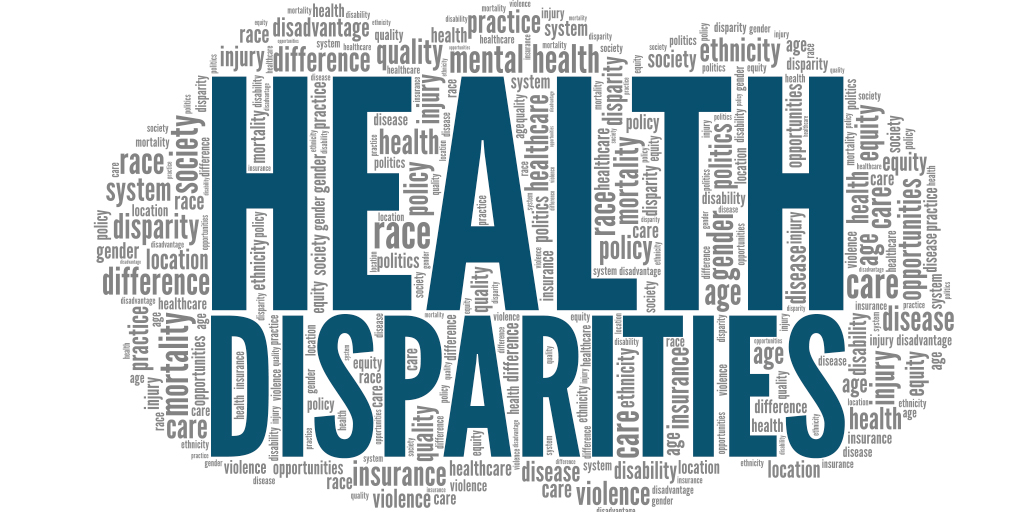Healthcare Barriers
Healthcare Barriers
Choose a specific leading health indicator or disparity type within the Healthy People 2020 website (for example, AHS-1.1 Increase the proportion of persons with medical insurance) https://www.healthypeople.gov/2020/data-search/health-disparities-data/health-disparities-widget
Respond to the following questions concerning the identified disparities to health within the Healthy People 2020:
Are there tools to help identify these gaps in care?
If you could develop a screening tool to address a barrier to healthcare, what would it look like?
Who would administer this and what resources would you need to coordinate with to solve this problem?
Is this feasible for a clinic setting? Why or why not?
Expectations
Due: Friday, June 11
Length: 1500 words
Format: APA
Research: At least two high-level scholarly references in APA from within the last 5 years.

Addressing Health Disparities
Health disparities are significant differences in health outcomes and access to care that are closely linked to social, economic, and environmental disadvantages. The Healthy People 2020 initiative emphasizes the need to reduce these disparities to enhance health equity across the United States. One specific leading health indicator is AHS-1.1, which aims to increase the proportion of persons with medical insurance. The lack of health insurance coverage significantly affects access to care, which, in turn, contributes to poorer health outcomes for vulnerable populations.
Tools to Identify Gaps in Care
Several tools can help identify gaps in care related to health insurance disparities. The National Health Interview Survey (NHIS) and Behavioral Risk Factor Surveillance System (BRFSS) provide valuable data on health coverage and its implications for various populations. Furthermore, the Health Resources and Services Administration (HRSA) offers the National Health Service Corps (NHSC) which can be instrumental in identifying areas with inadequate health insurance coverage. These tools enable healthcare providers and policymakers to pinpoint specific populations and areas needing targeted interventions.
Proposed Screening Tool
If I could develop a screening tool to address barriers to healthcare, it would be a “Health Insurance Access Questionnaire”. This tool would be a brief, self-administered questionnaire designed to assess an individual’s access to health insurance, barriers to enrollment, and perceived health care needs. Key components would include:
- Demographic Information: Age, race, income level, and employment status.
- Insurance Status: Questions on current insurance coverage, length of coverage, and previous coverage gaps.
- Barriers to Enrollment: Identification of barriers such as lack of awareness, financial constraints, or administrative challenges.
- Health Care Needs: Inquiry about unmet health care needs due to lack of insurance coverage.
Administration and Resources
This tool could be administered by healthcare providers in clinical settings, such as community health clinics, emergency departments, or primary care offices. To implement this screening effectively, coordination with community organizations, social services, and public health agencies would be necessary. Resources would include training for healthcare staff on administering the tool and interpreting results, as well as developing partnerships with local organizations to facilitate enrollment in health insurance programs.
Feasibility in a Clinic Setting
Implementing this screening tool in a clinic setting is feasible and would greatly benefit both healthcare providers and patients. Clinics, especially those serving low-income or uninsured populations, often experience high demand for services without adequate insurance coverage. By identifying patients at risk of being uninsured, clinics can proactively assist them in navigating the healthcare system, thus improving overall health outcomes. Additionally, utilizing existing infrastructure, such as electronic health records, can streamline the collection and analysis of data derived from the screening tool.
Conclusion
In conclusion, addressing health disparities, particularly those related to health insurance coverage, is critical for improving health equity in the United States. By utilizing existing tools to identify gaps in care and implementing a screening tool focused on health insurance access, healthcare providers can better support vulnerable populations. The collaboration between healthcare providers, community organizations, and policymakers is essential to reduce barriers and enhance access to care for all individuals.
References
U.S. Department of Health and Human Services. (2020). Healthy People 2020. https://www.healthypeople.gov/2020/topics-objectives/topic/social-determinants-of-health
National Center for Health Statistics. (2019). Health, United States, 2018: With special feature on health insurance coverage. https://www.cdc.gov/nchs/data/hus/hus18.pdf



